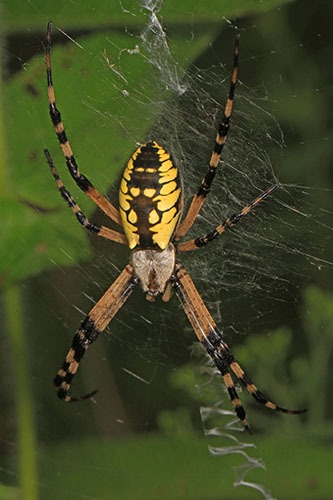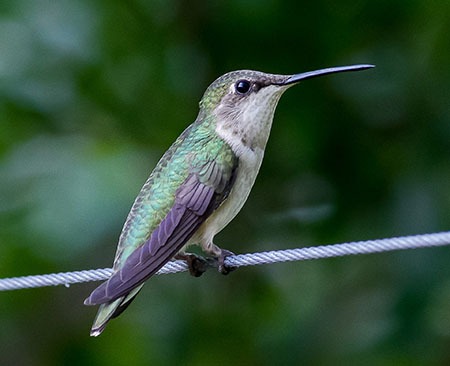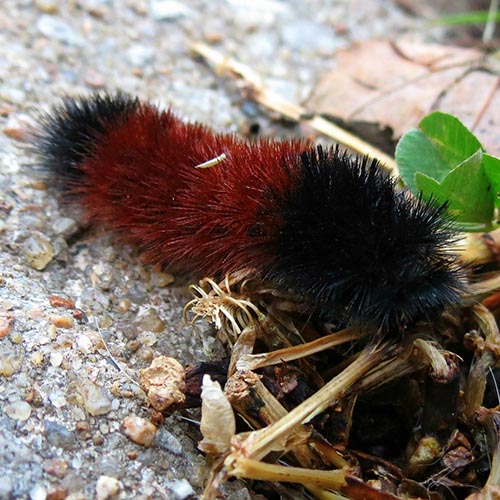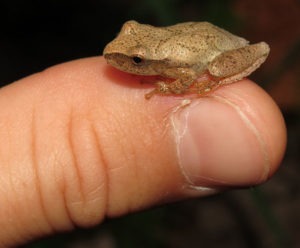Great horned owls (Bubo virginianus) are the largest owl found in Kentucky and surrounding states. Both males and females look alike, and their horns are actually just feathers. Great horned owls don’t migrate and a pair will defend the same territory year-round. They can be found in a wide variety of habitats including urban and suburban woodlots.
Like other owls, great horned owls have excellent hearing and eyesight. Owls are unable to move their eyes like we do. Instead they must turn their entire head to look at something that isn’t directly in front of them; however, great horned owls can turn their heads almost 270 degrees. In other words, they can turn their head past one shoulder, around behind them, and then look over the other shoulder.
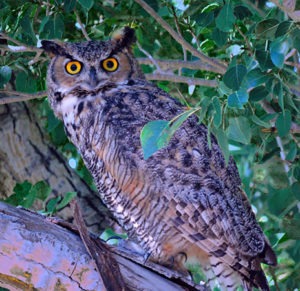
Great horned owls are typically only active at night; however, they can occasionally be seen at dusk or on cloudy days. During the day, they will roost in a tree. They tend to blend in well with their surroundings and can be easily overlooked. However, if a crow finds one then it may begin calling and harassing the owl. Other crows, and sometimes songbirds, will join in the harassment. Often, they will even follow the owl if it tries to leave the area.
Most people probably hear great horned owls more than they see them. The great horned owl’s call is a deep “Who, Who, Who” or “Hoot, Hoot, Hoot.” Grandpa used to call them the hoot owl because of their call. I’ve heard other people refer to them by the same name. Both the male and the female great horned owls will call, but the male’s call is typically deeper than the female’s.
Great horned owls are some of the earliest nesters. They nest in hollow trees or abandoned nests from other raptors. In Kentucky, the female will begin laying eggs in February or March. In northern states, she may begin laying slightly later and in southern states she may begin laying earlier. She typically lays two eggs and does all of the incubation. The male will bring the female food while she incubates the eggs. Once the eggs hatch, both the male and the female will bring the nestlings food. The young will leave the nest after a couple of months, but the parents will continue to bring them food and help them hunt.
The diet of a great horned owl is extremely variable. Mice and other rodents are the most common food items. However, they will also eat a wide variety of other animals including skunks, rabbits, squirrels, crows, geese, ducks, and even insects. If their prey is small enough, like a rodent or insect, the great horned owl will swallow it whole and then regurgitate the hair and bones later as an owl pellet. For larger prey, they have to tear off pieces to eat. Throughout their range, great horned owls are an important nocturnal predator that relies on quiet, dark nights to hunt.
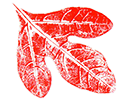
This article was part of Shannon’s original Kentucky Pollinators and Backyard Wildlife blog which evolved into the blog for Backyard Ecology.

Backyard Ecology: Exploring Nature in Your Backyard
Nature isn’t just “out there.” It’s all around us, including right outside our doors. Hi, my name is Shannon Trimboli, and I am the host of Backyard Ecology. I live in southcentral Kentucky and am a wildlife biologist, educator, author, beekeeper, and owner of a nursery specializing in plants for pollinators and wildlife conservation. I invite you to join me as we ignite our curiosity and natural wonder, explore our yards and communities, and improve our local pollinator and wildlife habitat. Learn more or subscribe to my email list at www.backyardecology.net.
